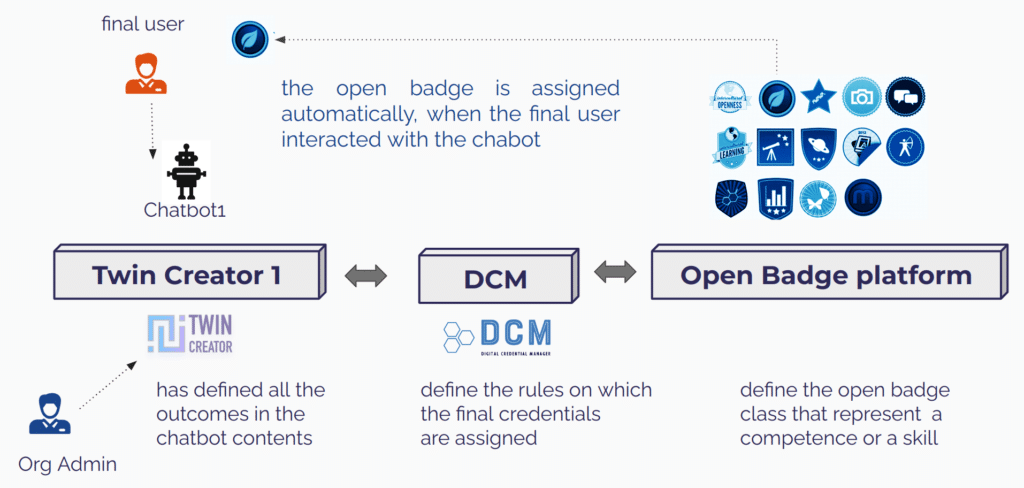In the second part of the interview with Sandro Cacciamani (avaliable only in italian here: https://www.dire.it/03-01-2024/997590-ia-a-bologna-prende-forma-il-virtual-coach-che-aiuta-a-studiare/), we mention the integration that Ex Machina italia and Memori.ai have created to link the Twin Creator platform with an Open badge platform.
We briefly explain how the integration was realised and what its added value is.
In order to be able to use any digital platform efficiently, especially if it is based on AI, it is necessary to acquire a complex set of operational and domain skills (i.e. related to the content managed by the platform).
These skills can be acquired through training prior to the use of the platform itself and also through continuous and daily use that allows users to refine their skills and make them increasingly precise and effective.
The digital platform, therefore, in addition to being a mere operational tool, also plays the role of a learning environment and encourages the acquisition and refinement of the aforementioned skills with a ‘learning by doing’ approach.
So why not certify and expose these competences by means of the Open Badges standard in order to make the results of this learning explicit and visible?
This is exactly what we did starting with the Twin Creator digital platform. For some time now, those who use this online application, in creating evolved conversational agents, have been gradually acquiring skills on, for instance, how to write prompts (prompt engineering), how to manage content, how to disseminate AI in the appropriate channels (from the web to the metaverse). Through interaction with the application’s functions, they can acquire different open badges that attest to different levels of competence on the use of the platform, and indirectly also on the knowledge of how to create/manage an AI.
But even more so, the recipients of these chatbots, i.e. the ‘customers’ or ‘end-users’ of those who conceived these agents, can also be addressed digital ‘rewards’.
For instance, let’s say a company wants to create its chatbots as simple ‘online assistants’ of its services, or even more sophisticated agents, well, from the interaction with them, it is possible that the end users receive open badges. The assumption is that one can recognise skills or micro-skills from the very interaction with the chatbot.In fact, the interaction that can be realised is complex; the chatbot should no longer be seen as a mere ‘repository of more or less prefabricated answers’, but is also capable of interacting. For instance, of asking the user questions at certain times, of evaluating the answers.It is on this scenario of use that it becomes interesting to be able to recognise, for those who spend time with a virtual agent, that they have learned or at least touched upon certain topics, qualifying in some way the interaction itself when it becomes meaningful.
How can this happen?
On the Twin Creator platform, the chatbot author can tag certain content, which will then be marked as ‘outcomes’, i.e. as ‘achivements’ that the system will track. Exmitalia’s middleware application DCM (Digital Credential Manager) receives the outcomes generated on the individual user, and on the basis of (configurable) rules decides when one or more recognitions (open badges) can be awarded.Open badges must of course be defined, with all the ‘chrisms’ that the standard requires, in a platform for issuing digital credentials.





